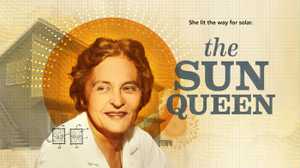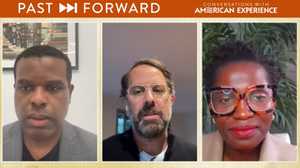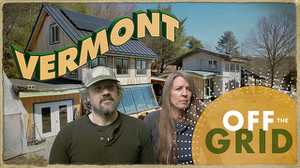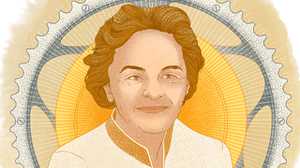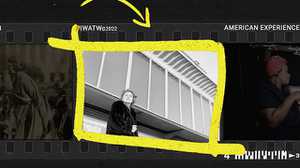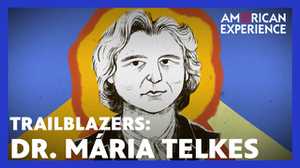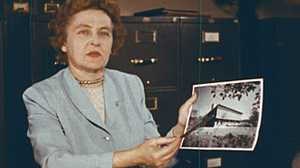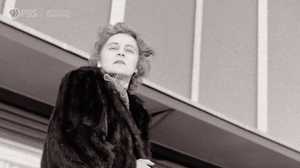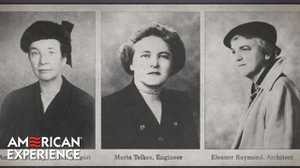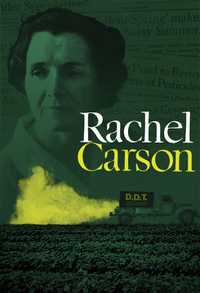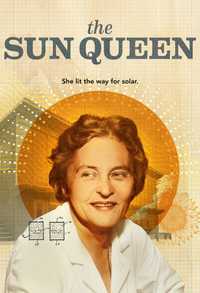Narrator: In September, 1980, the Department of Energy was in the midst of building a revolutionary house. A recent energy crisis, and early warnings about global warming, had helped to bring the project about.
Located in Carlisle, Massachusetts, the remarkable new structure was to have solar heat, solar hot water, solar-powered appliances, and in theory would even sell the excess energy it produced back into the grid.
To pull it off, the DOE made a most unusual call – to an 80-year-old retiree down in Florida. Her name was Mária Telkes, and some 40 years earlier, the Hungarian physicist had put solar on the map – so famously, in fact, that she went by the nickname: the Sun Queen.
Michelle Addington, Architecture Professor: She was ahead of her time and she was asking the right questions. We have this amazing thermal source with incredible power. Why have we not harnessed it?
Andrew Nemethy, Journalist: She saw something that I don't think anybody conceived of at that point. She imagined that the world could get free power from the sun. I mean if one person’s vision is here, her vision was way out there.
A.L. Hu, Architect: Telkes believed that there was a moral imperative to understanding solar energy, not just as an alternative, but as a way to kind of live our lives.
Archival, Mária Telkes: I would like to show you some very simple things like a house. The sun’s energy is absorbed and is transformed into heat.
Daniel Daniel A. Barber, Historian: What Telkes showed us was that this ambition to think differently about energy sources not only changes the way that we build, the way that we produce heat, the kind of technologies of those systems, but also shifts our expectations, right? Shifts the way that we think about living in a house.
Narrator: Telkes came out of retirement to help make the Carlisle house a success. When it came to all things solar, her passion bordered on obsession. Her vision was as legendary as her engineering, but her ambition came at a cost.
Andrew Nemethy, Journalist: Mária was a solar evangelist. Like a lot of evangelists, she was pushing her vision very strongly. Anybody who disagreed with that vision kind of rubbed up against her the wrong way.
Olivia Meikle, Gender Studies Scholar: This was not something that would have been easy as a woman, but she was determined to change the world in the face of what must have been enormous odds.
Sara Shreve-Price, Historian: Telkes knew you can’t just wait for society to be ready. You need to sell them on this idea. You need to convince them that this is the time for the idea. If we want the sustainable future, we don't just need the technology, we need to want the technology.
Scene One: The Spark
New York Harbor, 1932
Narrator: Mária Telkes, 32, physicist, had just arrived from her native Hungary. Her immigration papers gave her height, and marital status, but said nothing about her most distinguishing trait of all.
Telkes was a scientist on a mission, and had traveled to the United States for one reason, and one reason alone.
By the early 1930s, America was in the throes of a solar revolution that had been going on for more than 50 years.
In 1884, the first experimental solar panels had gone up on a New York City rooftop. Four years later, the American chemist Edward Weston developed the world’s first solar cell. While on an ostrich farm in Pasadena, one inventor installed a giant solar motor, some 35 feet across, that pumped enough water from the local well to make the dry California ground a verdant paradise. In any single issue of Scientific American, subscribers might read about a solar printing press that could reel off 500 copies an hour, or a host of solar gizmos that did everything from pumping sewage to distilling alcohol. At the turn of the century, there were so many solar hot water heaters in homes in Florida that one resident remarked, “I can’t remember a house on the block […] that didn’t have [one].”
Ivan Penn, Journalist: It was this age of all this talk about solar. It’s about 1905, Albert Einstein is looking at, what they called, the photoelectric effect. The release of electrons when light hit metal. Which is essential in using solar to make electricity. By 1931, Edison is in a conversation with Henry Ford and he says, “I’d put my money on the sun and solar energy” in how we ultimately are going to power the world.
Sara Shreve-Price, Historian: Telkes is passionately interested in trying to chase the power of the sun. In the United States, in the 1930s there are some really interesting projects, but there haven't been giant successes, and I think she sees that as a real possibility.
Narrator: Telkes had been obsessed since she was a girl. The brilliant daughter of wealthy Hungarian bankers, born December 12th, 1900, in Budapest, she’d explain, “I was only 11 when [I became] intensively curious about chemistry. I purchased test tubes and chemical glassware, and a small garden house became my ‘laboratory.’”
From the beginning, she had bold plans to put her science to work.
Adam Rome, Historian: Telkes, growing up in Hungary, coal was the dominant form of energy. Coal was incredibly polluting. You could have days, in the middle of the day, when it seemed like night, or like an eclipse where you couldn't see the sun. So there were people early in the 20th Century who did imagine a coal-less future. And Telkes, growing up in that time, begins envisioning alternative sources of energy.
Narrator: By the time she was 24, Telkes had earned a doctorate in physical chemistry from the University of Budapest.
“It is the things supposed to be impossible that interest me,” Telkes would explain. “I like to do things they say cannot be done.”
In May, 1932, Telkes arrived in Cleveland, where by day, she had gotten a job as a researcher at a biomedical facility. But by night, she was developing and refining a device called a thermopile to convert sunlight into electricity.
Her work caught the attention of the press, and in 1934 she was hailed as one of the most interesting women of the year, alongside a tennis champion, a Rockefeller, and child actress prodigy Shirley Temple.
As one reporter who met her at that time remarked, “Miss Telkes [...] is a scientist, everything else bores her.”
Andrew Nemethy, Journalist: She was adventurous. She came over to the United States and basically fell in love with it. She loved the country and she loved the freedom that she had to use her immense skills and her vision for whatever she came up with.
Narrator: Now, in April, 1938, out in Boston, she heard about an exciting new project starting up, at the Massachusetts Institute of Technology.
The Solar Energy Fund launched to bring together the very best minds on the solar question.
As university leaders told the press, “The store of energy in our familiar fuels, while great, is not inexhaustible” – so it was high time for bold new thinking.
Telkes immediately wrote to them, “I read with great interest the announcement of [the Solar Project]… may I have the opportunity of a personal interview?”
Her timing couldn’t have been better. Her new thermopile could, by her own estimation, turn sunlight into power some ten times more efficiently than any existing technology.
When she initially wasn’t offered a position, she traveled to Boston with her prototype, determined to impress the all-male committee.
The gambit worked, and in July, 1939, she got the job.
But just as it all was falling into place, everything changed.
Scene Two: The Storm
Narrator: As war broke out across Europe, Asia, and the United States, it unleashed an energy crisis the likes of which the world had never seen.
By June, 1943, petroleum reserves on the East Coast dropped to an all-time low. People needed a ration card just to fill up the tank…
Archival VO: Okay it’s an A card, three gallons.
Narrator: … and were forbidden from driving faster than 35 miles an hour – known, henceforth, as “Victory Speed.” Making matters worse, Nazi U-Boats were sinking so many oil tankers in the Gulf of Mexico that beaches were stained ink black.
Adam Rome, Historian: World War II accentuates the sense that a reckoning is coming. It really was, partly, a war about resources.
Archival VO: Use trains. Use bus lines. Share cars going to work.
Adam Rome, Historian: And so it’s this incredible period of government promotion of conservation. So people were hyper-conscious of their fuel use. And, for a while, this idea really mattered for a lot of Americans.
M.I.T., 1942
Narrator: Telkes’ solar dream was more urgent than ever, but the MIT Solar Project was put on ice for the duration of the war.
The entire team was reassigned to help with the war effort, and Telkes threw herself into the work, alongside her collaborator, the head of the Solar Energy Project, a chemical engineer named Hoyt Hottel.
Two years younger than Telkes, Hottel had blazed his own brilliant path, enrolling at the University of Indiana at the age of 15, and pursuing his own research just as single-mindedly as she did.
They clashed right from the start.
Daniel A. Barber, Historian: Hoyt Hottel was an ambitious young scientist doing a lot of good, sort of basic, scientific research, but he was certainly not somebody who was interested in rocking the boat.
Olivia Meikle, Gender Studies Scholar: For Hoyt Hottel, science is about knowledge. He's very interested in big, important academic ideas, but he is not very interested in how any of these things might apply in the world. Whereas for Mária Telkes, science is about making lives better, making the world better. She is interested in science from a humanitarian perspective.
Narrator: Now, Hottle and Telkes were trying to solve an urgent problem.
Combat in the Pacific was seeing hundreds of men shot down every week, and entire crews were sometimes adrift for days at a time. The assignment was for a small, portable device that could transform salt water to something that the boys could drink.
Telkes immediately saw the opportunity to use the power of the sun.
Archival, Mária Telkes: Here is the limitless ocean with its saltwater, which is unfit for drinking. Solar stills were developed to produce fresh water from sea water with a simple device, which looks like a bubble.
Narrator: The solar still was ingenuous in its simplicity. As the sun evaporated the sea water, it turned to vapor inside the “bubble,” before recondensing – having left all the salt behind.
Olivia Meikle, Gender Studies Scholar: She comes up with a very innovative and completely practicable model and it is now up to Hottel, as the head of the project, to actually manufacture the device that Mária Telkes has invented.
Narrator: By the summer of 1945, as combat wound down in the Pacific, the government had already placed an order for 100,000 solar stills, but not a one had made it down the assembly line. Meanwhile, at MIT, Hoyt Hottel, ever the perfectionist, kept switching manufacturers and quibbling with Telkes over design details – unwilling to commit until he believed his exacting standards had been met.
Olivia Meikle, Gender Studies Scholar: Telkes is counting lives that could have been saved every month that this is delayed. And that's not the way that Hoyt Hottel sees the world.
Michelle Addington, Architecture Professor: It’s probably one of the reasons why they were at loggerheads with each other is, you know, one person, very specific, very methodical. And another person saying, ‘No, we need to run real quickly.’ That's about as far apart as you can get for two scientists who are interested in working on the same thing.
Narrator: Despite being hailed in the press as a major scientific breakthrough, the solar still was never deployed in combat. By the time the design hit the desk at the patent office, the war was over.
But if Telkes was frustrated with the delay, there was no record of it.
She already had her eye on an even bigger challenge.
Scene Three: House Of The Future
Narrator: Everywhere, in the year 1945, people were picking themselves up, and getting acquainted with a brave new world. The art was iconoclastic. The philosophers were radical. And the architects were promising nothing short of a spectacular utopia, as a wave of modernism swept the nation – from Frank Lloyd Wright’s Usonian style, to Fred Keck’s House of Tomorrow, to Buckminster Fuller’s Dymaxion Dwelling.
Sara Shreve-Price, Historian: Modernism draws on this belief that technology is an answer. That we're going to shake off the old 19th-century past, and we’re going to go into this new world structured by these technological capabilities that we never could have dreamt of before.
Narrator: There was a particular interest in houses that could be more energy efficient – since, though the fighting had ended, the wartime scarcities had not.
Andrew Nemethy, Dover House Resident: There was a real sense of energy insecurity. And all of a sudden, here comes Mária Telkes saying solar could be the answer.
Narrator: Telkes’s latest idea was to double down on turning the MIT Solar Project into a laboratory for developing a radical kind of experimental house – one that would be heated, entirely, by the sun.
The term ‘solar house’ dated to 1940, when an article in the Chicago Tribune had announced “a new type of suburb home.” There were a few so-called “solar” houses already in existence – some in the midwest, one in Colorado. Making it all possible, was a new kind of technology – a revolution in the form of a glass window.
Archival VO: The modern insulating window delivers year-round comfort. Each room is cooler in summer, warmer in winter – with big cash savings on your fuel bill.
Narrator: The public fell in love with the cost savings and efficiency of the new insulated glass, and, suddenly, by the late 1940s, so-called “solar” homes were everywhere.
Sara Shreve-Price, Historian: If you would’ve opened a magazine on any given month you would have seen an article on solar housing about as commonly as you would see one today.
Narrator: As popular as the first generation of solar houses was, they all had a big issue. No matter how well they worked on sunny days, not a single one could hold heat overnight.
“The critical problem [of solar energy],” Telkes explained, “[is] storage.”
Ivan Penn, Journalist: Thermal energy storage was seen as the holy grail for solar power.
Michelle Addington, Architecture Professor: Telkes was incredibly farsighted in focusing on the storage problem. Harnessing that huge amount of energy, which then disappears over the course of the day, is not something that's readily done.
Narrator: As the leader of the Solar Project, Hoyt Hottel had proposed one answer: water.
Widely available, comfortably familiar, and, possibly, good enough at retaining heat to pull it off.
Hottel himself drew up plans for an experimental structure to test a number of variables.
Designed to maintain a comfortable 72-degree temperature through the winter, the building would eventually go by the name Solar One.
A.L. Hu, Architect: The Solar One house featured an array of collectors on the roof, covered by glass, and then there were copper tubes that were, sort of, absorbing the heat of the sun. And that was being brought down to a tank of water that was underneath the house. This was a huge tank of water. Because water does retain heat, but the system didn’t work very efficiently.
Olivia Meikle, Gender Studies Scholar: You would have to have an economically unfeasible amount of hot water to make this work. Mária Telkes comes at this from a totally different perspective. She's very fascinated with phase change materials.
Narrator: Phase change materials: chemical compounds able to store and release energy as they pass from solid, to liquid, to vapor. In the lab, Telkes had recently been experimenting with a phase change chemical called Glauber’s Salts – after the Hungarian scientist who’d discovered them way back in the 17th century.
Michelle Addington, Architecture Professor: Glauber’s Salts are quite extraordinary. As they absorb the solar radiation from the sun, they liquify. If you wanted to sort of use the heat from that, then you allowed them to solidify.
Narrator: Telkes’ recent tests suggested that the Salts were much more efficient than water, and that they could potentially hold heat for more than a week at a time. She reasoned that they might be made to work like a radiator and solar battery all in one.
But something about her idea worried Hoyt Hottel. The salts were an unknown quantity. And a new experiment would take staff and students away from other projects that he deemed more worthwhile. Underlying it all, was the fact that he didn’t buy into her vision. “A healthy pessimism,” he once said, “is better than rosy optimism for approaching the problem of solar heating.”
Olivia Meikle, Gender Studies Scholar: Hottel worried about whether Glauber’s Salts will be useful or will work at all, but Mária Telkes is not somebody who’s going to be told ‘no’. She’s a woman who believes in her own abilities and she’s going to do whatever she can do to make that happen.
Narrator: By the fall of 1946, Telkes had brought Hottel around, and won his approval for a new structure – staking her reputation on the technology she’d been developing.
More of a laboratory than a house, Solar Two abandoned its predecessor’s homey façade for a wall of vertical solar collectors. Inside, was a series of seven compartments, each behind a refrigerated door, each running a different trial, testing everything from construction materials to heat retention.
But there were problems from the start.
Daniel A. Barber, Historian: From the perspective of, say rational, scientific, experimentation, the project didn't really work. It leaked. The salt, the chemical solutions themselves leaked. The heating systems leaked, the refrigerator doors leaked. I mean, everything was a bit more leaky than desired to maintain good experimental conditions.
Narrator: To Hottel, the leakiness and loss of heat were, in his words, “excessive,” and he was unconvinced by the Glauber’s Salts, which he concluded were more trouble than they were worth.
Olivia Meikle, Gender Studies Scholar: It’s a major failure. But very much framed as her failure, not a team failure, and a particularly embarrassing failure, which again seems a very disproportionate response to what is a pretty standard scientific failure, that ‘we tried it, it didn’t work, next.’
Narrator: Hottel now believed he’d been proved right. And with the failure of Solar Two as ammunition, Telkes was removed from the solar project altogether. Yet she was undeterred. Being sidelined only entrenched her confidence in her own ideas.
“Conservative engineers treat this subject with near derision,” she remarked doggedly, “ but sunlight will be used as a source of energy sooner or later.”
She had only one question: “Why wait?”
Scene Four: Dream Team
Boston, 1947
Narrator: In Boston, while Telkes was figuring out her next move, there was, on the other side of the city, an architect as unique in their field as Telkes was in hers. Her name was Eleanor Raymond.
Daniel A. Barber, Historian: Eleanor Raymond was a woman who had built arguably the first modern design structure in the northeast. She was not held back by the traditional styles that were quite prevalent in New England at the time.
Andrew Nemethy, Journalist: She was an architect when women didn't do that. She was one of the first women to become an architect in Boston. And she was gay as was generally acknowledged, she had a full time partner in the ‘40s. And so she was a groundbreaker in so many ways.
A.L. Hu, Architect: Eleanor Raymond was very much like Telkes, thinking about innovation and making new things. She was already kind of pushing the boundaries of what a house could be.
Narrator: Back in 1940, Raymond had built a house made entirely of plywood. The first of its kind in the world, the experimental structure had been commissioned by Amelia Peabody, a wealthy Boston philanthropist whose support for innovative architecture was but one of her many passions.
Andrew Nemethy, Journalist: Telkes had been searching for an angel, that was the actual term that she used, she wanted to find an angel who was going to fund her efforts. She discovers Amelia Peabody, who had the wealth and the standing to sponsor projects.
Narrator: There was money for the Boston Museum of Science, for new medical research, for injured military veterans, and for the renovation of the Old North Church.
Now, in the summer of 1947, over at MIT, Telkes had been shunted off into the Metallurgy Department, but remained laser focused: she was going to build the “sun-heated” home – not for experimental data collection, but for an actual family to live in.
Olivia Meikle, Gender Studies Scholar: This is a completely new way of doing this. This isn't a shed on the grounds of a university. This is a real test of the concept.
Michelle Addington, Architecture Professor: It wasn't sort of following what you would consider to be the normative ways that we would fully test and fully develop before sort of leaping into a technology that is actually meant to be in people's homes.
Narrator: Without MIT’s approval, Telkes wrote to Raymond and Peabody.
At first, Peabody wasn’t convinced. “There is little prospect of me building another house at present,” she replied to Telkes in August. But then came the winter of 1947.
As temperatures dropped and a blizzard buried Boston in snow, distribution problems and labor unrest left the entire northeast facing a crippling coal and heating oil shortage.
Daniel A. Barber, Historian: There was no heating oil in a frigid winter and you can imagine that people were not only cold, but also scared and also wondering, what are we doing as a country. How are we going to sort of work ourselves through this, kind of, transition to the post-war world?
Narrator: By early spring, as the crisis receded, Telkes convinced Amelia Peabody to support the world’s first solar-heated home. Raymond celebrated it as a “historic moment,” adding in a letter to Telkes that it was a “thrilling time” for all.
Sara Shreve-Price, Historian: Telkes realizes at MIT, if everyone else isn’t going to let you be part, you need to find kindred spirits.
Daniel A. Barber, Historian: And they developed this sort of dream team, right, of the engineer, the architect, and the funding source.
Andrew Nemethy, Dover House Resident: I call them, this visionary troika, that got together to do something that nobody else had done.
Narrator: Their plan was for a two story, five-room dwelling, perfect, for one post-war family. But nowhere, in those 800-square feet would there be any space, whatsoever, for a furnace.
Scene Five: The Dover Sun House
Narrator: A few weeks later, Raymond drove Telkes through the countryside beyond Boston, studying their prospects, before choosing a site on Peabody’s sprawling 800-acre property in Dover, Massachusetts.
Come summer, Raymond invited Telkes out to her house on the coast in Gloucester.
“We had an entertaining time,” Raymond wrote in her diary, but with Telkes around it was all science, all the time.
“A versatile lady,” Raymond concluded, “and an amusing one – in small doses.”
Andrew Nemethy, Journalist: She was very entertaining, but she was a woman who wanted to be the center of attention. And you might say she was unsteerable away from her vision. People didn’t know what to make of her.
Joy Olgyay, Telkes Goddaughter: Mária had a few idiosyncrasies. Her mind was somewhere else, it was not on these everyday things. She did not cook, she did not sew. She was a visionary and thinking about projects and problems, and the other things didn’t matter.
Narrator: Now, with construction underway, Telkes could hardly wait, suggesting to Raymond that a “speeding-up spell” be used when the slightest delay was encountered.
Built by a team of local carpenters, out of strange and new materials, the Dover Sun House was designed to be different from the start.
Andrew Nemethy, Journalist: It was unusual and radical. So everything about that house was, sort of, created out of whole cloth.
Narrator: Finally completed in November, 1948, and painted red to match the average New England barn, Raymond arranged for a group of students from a local women’s college to do the interior design. Even the new age furnishings were meant to prove, beyond a doubt, that this was the house of the future.
Now, only one thing was missing.
The boldest solar experiment ever attempted officially launched – when, on Christmas Eve, a family of three showed up, and moved in.
Their arrival at the Dover Sun House was practically a miracle in and of itself.
Andrew Nemethy, Dover House Resident: Mária was a second cousin of my father, but I don’t know that they knew each other very well. My parents fled Hungary when the war ended and the Soviet soldiers started coming. We were one of the last people to get across the border before the border closed. Mária must have learned that we were here in the United States. She was a very savvy PR woman and she may have realized it was a savvy marketing maneuver. That was part of why she selected us to live in that house. My parents coming to a new country–I can only imagine what they thought, “We're gonna live in a solar house. Okay, what is a solar house?”
Sara Shreve-Price, Historian: For Telkes, it's a pretty ambitious idea that you are going to put a family with a little kid into this house with this technology that maybe works, but you don't know for sure. And so it's not just an experiment in, do these salts work? It's an experiment in, is this a nice way to live?
Narrator: On the inside, there was the part of the house for the Nemethys – with vast windows, and a lovely kitchen. And then, barely concealed, there was the tech. Large stores of Glauber’s Salts – some 4,275 gallons in all – that worked, without a peep, a hiss, or a hum, mostly behind the scenes.
Andrew Nemethy, Dover House Resident: The upper floor was almost entirely the heating system. So these big windows, which are 12 feet tall. And then all this ducting that would collect the heat and then blow it down into cans of Glauber’s Salts.
Michelle Addington, Architecture Professor: These salts, they'd absorb the heat from the sun, they liquify. And they would sit there in that molten phase. The way that it released the heat–you’d have air blowing across the salt and when they solidified, they gave up their heat. If you don't want the heat, the air is shut off. That part, very, very simple type of system.
Narrator: The Nemethys, meanwhile, were to track every minor modulation.
Olivia Meikle, Gender Studies Scholar: Telkes says, ‘You're going to be the guinea pigs but you're also going to be the scientists, you're going to be monitoring all of the progress, giving us all of the information, all of the data that we need. What's the temperature every day? How is everything working?’
Andrew Nemethy, Dover House Resident: I think my father sort of enjoyed it. I mean, he knew a lot about it, he got down into the nitty-gritty of the temperature and the angle of the sun. It gave him, probably, a sense of purpose.
Narrator: Despite the dreadful New England weather, this time Telkes’ gamble paid off.
“When the door opened,” Raymond remembered, “I was greeted with a flood of warm air that I knew had to have come only from the sun, and that was really thrilling.”
By March, the little family had made it through the worst of winter – all without a single drop of oil.
Scene Six: Too Close To The Sun
Archival VO, Cartoon Sun: ‘Everyday I send you a thousand times more power than you use in a year.’
Archival VO: Cartoon Man: ‘Anybody working on getting power direct from ol’ blow-hard here?’
Archival VO, Man: ‘Oh yes, but not nearly enough. There’s other important research in changing sunlight into power. Dr. Mária Telkes has designed a model house in Massachusetts in which solar heat is ingeniously collected, stored, and distributed throughout the whole house.’
Narrator: Practically overnight, the Dover Sun House had become one of the most famous buildings in the country.
“The house is so different,” the Boston Globe admitted, “that you would not, on first sight, take it to be a dwelling. But, right now, it is probably the most important house in the temperate zone.”
Sara Shreve-Price, Historian: The Dover Sun House is really built with publicity in mind. It’s an experiment, but it’s an experiment for the world to see.
Narrator: First came the press, then the eager onlookers.
Andrew Nemethy, Dover House Resident: On Wednesdays and on Sundays from two to five, we would give tours of the house. So we had to have the house nice and neat and clean. We would open up the house and the people would come in and my father would answer questions and they would look at my mother, smiling–as she had a great smile and was very personable. So for three hours it was a little bit like living in a fish bowl. The house was closed at 5 o’clock, but my father once told a story about people who were up in the attic where they could see where all the solar panels were. They were still up there after the tour had closed.
Narrator: From January through August, 1949, more than 3,000 people trekked to Dover.
Increasingly, Telkes herself was at the center of the media frenzy.
Andrew Nemethy, Dover House Resident: I’m not surprised that that happened. Mária was exotic, partly because of her accent, partly because she was attractive, she was vivacious, and she was a tremendous promoter.
Olivia Meikle, Gender Studies Scholar: She's not just a scientist. She's glamorous, she's entertaining, she's fun. A lot of the society writers especially will describe her as a 'stunning blonde Hungarian scientist' or a 'stunning auburn Hungarian scientist'. So it's very telling to see how she is talked about, but, at the same time, she was going to use that attention to move the project forward.
Narrator: Over the next three years, Telkes continued to make headlines, this time with the culmination of her wartime research: a solar desalinator, over 50 feet long, that could churn out 44 gallons of drinking water a day. Then, in Chicago, in 1952, Telkes won the inaugural award from the Society of Women Engineers, and her work was celebrated at the Statler Hotel. Next came an honorary degree, from St. Joseph’s College.
By now, Telkes’ fame extended well beyond the United States.
Andrew Nemethy, Dover House Resident: My parents had a clipping service, so any time Mária Telkes showed up anywhere, we were sent clippings. We got them from the Hindustan Times, we got them from German newspapers, we got them from all around the world.
Olivia Meikle, Gender Studies Scholar: She acquires one of my favorite nicknames, the Sun Queen, which is such a good example of her interaction with the public, right? If you have someone named the Sun Queen talking to you about solar power, it just got way more exciting.
Boston, 1953
Narrator: Meanwhile, back in Boston, the MIT Solar Project had been operating for 14 years, with three experimental houses, but not much discovered. And now, Hoyt Hottel had had to watch as Telkes’ private project captured the imagination of the world.
Olivia Meikle, Gender Studies Scholar: Everyone is thrilled about the Dover Sun House except the men at MIT. Even though this is not affiliated with MIT, they are furious that she is getting attention for it and the way they’re talking about it in letters behind the scenes is really illustrative. There’s a lot of use of words like, ‘she refuses to submit’. ‘She won’t be controlled’.
Sara Shreve-Price, Historian: She is too aggressive. She is pushy. Essentially it reads like the problem is that she is an assertive woman, and there’s just no forgiving her for that.
Narrator: On June 30th, 1953, Mária Telkes was fired from MIT.
The report, which had led to her termination concluded, “It is hoped that the Telkes incident is now effectively closed.”
Sara Shreve-Price, Historian: To be assertive enough to have any success in this world that is dead-set on not encouraging people like you to do the things that you do. How could you get anywhere in that world and not be labeled a troublesome woman?
Scene Seven: Something New
Archival VO: Now, the dream of tomorrow!
Narrator: By the early 1950s, post-war scarcities were over and Americans were being told that the space-age future they’d been promised was close at hand. The veterans of World War II were now starting families. They were buying new houses and new cars – and absolutely everything in between.
Adam Rome, Historian: There's this tremendous push for mass produced house stuff. I call it the suburban industrial complex, that once you own a home, you're going to buy a zillion other things, from appliances for the kitchen, to lawnmowers, it goes on and on and on.
Daniel A. Barber, Historian: The postwar period was one where the consumption of everything just exploded, right? I mean, just shot straight up.
Archival VO: You’ll find a scene like this in nearly every village, town, and city throughout the country.
Sara Shreve-Price, Historian: In the 1950’s, you live this life of post-war ease. And so in a world of abundance, consuming inefficiently becomes part of being American.
Narrator: American was at a crossroads, and Mária Telkes forged ahead on her own distinctly different path. In the fall of 1953 she left Boston, and found a new position, at New York University, as well as a welcome distraction in the form of a brand new challenge.
Archival Newsreel VO: Here on the campus of New York University, Dr. Telkes and a student assistant bring the solar stove outdoors to a sunlit location. Both the simplicity and light weight of the stove are apparent…
Narrator: Able to reach temperatures of 400 degrees, and costing only four dollars, the Telkes oven was small enough to carry, yet could cook a complete dinner for a family of four.
By her side was her new research associate, Stella Andrássy.
Joy Olgyay, Telkes Goddaughter: Stella Andrássy was my grandmother. She was the one who would do field trials with these things, then come back and give Mária feedback on it. And they'd work on it, try another design. I remember being by the swimming pool, my grandparents' house and my grandmother making dinner made from the solar stove. Everything would be cooking while we were in the swimming pool, swimming around.
Narrator: Solar oven devotees could even turn to a cookbook, written by Andrássy herself. There were recipes for sunbaked chicken, and “soupe soleil,” and peach pie.
Telkes, meanwhile, did her best to capture the attention of the press. “Everything,” she told one reporter, “seems to taste so much better when it is cooked by the sun.” And she’d tell anyone who’d listen that the solar oven was designed to change the world.
Daniel A. Barber, Historian: Telkes realizes what technological innovation can do is not provide some sleek, beautiful car for the rich and famous. What technology can do is dramatically improve quality of life, and especially for those who have fewer capacities to do that on their own.
Archival, Mária Telkes: Of course the stove is not for the regions where you have gas or electricity freely available. This is primarily for the tropics, stoves such as this, would be available at a very low cost. People may have a new lease on life and improve their civilization.
Michelle Addington, Architecture Professor: Telkes continues to demonstrate her deep care for humanity. She really imagined this as revolutionizing the way that people lived.
Narrator: Now, in November, 1955, Telkes was off to Arizona, stove in tow. She was joining 1,000 other scientists, from 35 countries, for the first ever World Symposium on Applied Solar Energy. The theme was “The Sun at Work,” and the mood was ebullient.
“Remember when people were worrying about running out of fuel?” one journalist enthused. “Now [...] the prospect is that there will be more power [...] at hand [...] for as long as life exists on earth.”
There were enough solar gizmos to fill a fairground – everything from a solar telephone from Georgia to a solar car engine from Italy.
Telkes met with colleagues from solar research programs recently started in Minnesota, Wisconsin, France, and Israel – and old friends were there as well.
It was inevitable that Hoyt Hottel and Telkes would eventually cross paths, as they did now under the desert sun. But as Hottel gave his lecture on solar heating, it was what he left unsaid that could have changed the world.
Recently, the federal government had come to MIT with a request for help with an unprecedented new venture – they wanted to build an all-solar neighborhood, something to show the world, and to trial the technology on a bigger stage. But Hottel was dubious.
Olivia Meikle, Gender Studies Scholar: Hoyt Hottel built his whole identity, his whole reputation around thinking stuff wouldn't work, and loudly being the voice of skepticism on projects that he’s supposed to be championing.
Narrator: And there was something else feeding his apprehension. Telkes had been involved in the inception of the idea, and Hottel was well aware that he’d need to work with her again if they were now to attempt it.
And so he turned it down.
“Our team,” stated the reply, “does not feel ready for demonstration housing.”
Sara Shreve-Price, Historian: A neighborhood built with government backing, what kind of an opportunity would that have been? It just breaks your heart to think that he would turn this down specifically because he didn't want her involved.
Scene Eight: Fall Of Dover
Narrator: Despite the setbacks and the roadblocks, Telkes remained steadfast in her belief in a solar future. As the years rolled on, Mária Telkes’ “solar life,” as she called it, became increasingly nomadic. She moved to Princeton, then Virginia, then Delaware. Everywhere, she continued to push her vision of solar-heated homes for the masses.
Andrew Nemethy, Journalist: She actually talked about mass-producing solar houses, which was considered, probably, a very radical and bizarre idea then.
Narrator: She put together a pitch for the production of a solar house that would cost only $10,000 and could be prefabricated in great numbers. “All of the people with whom I have discussed the house expressed a great deal of interest,” one construction company responded, “but the cost of the solar [equipment] scared everyone to death.”
Olivia Meikle, Gender Studies Scholar: It’s just another example of how she really was kind of indomitable. She said, “Fine. I will go find other places to do this, I will find other ways to pursue these things that I think could be important.”
Narrator: She would go on to develop solar houses for private industry, and, later, the University of Delaware. And through it all, she kept in touch with Eleanor Raymond and Amelia Peabody, sending them copies of her latest research papers, and briefing them on her newest plans for putting the sun to work.
But as Telkes looked to the future, in Dover, the dream had begun to crumble.
As the radical little Sun House neared its sixth birthday, problems had emerged that were increasingly impossible to ignore. Twice already, the solar collector had had to be completely rebuilt, and that wasn’t all.
Andrew Nemethy, Dover House Resident: My mother called up and said, “We're freezing in here.” And so they gave us some electric heaters that we ran, and when the people came in to tour the house, we hid the electric heaters. That was the reality of it.
Michelle Addington, Architecture Professor: There were a lot of moving parts that were subject to failure. And unfortunately many of them failed. There was corrosion in the materials. There was a lot of difficulty with the glazing systems. The concepts were spot on. The ideas were absolutely brilliant, but once these systems started failing, it couldn’t heat the house.
Narrator: Finally, Amelia Peabody wrote to Telkes to give her the news. She was going to install a furnace.
“I am sure that this will be a blow to you,” she wrote, “but I don’t think it's doing the reputation of the house any good to have it so cold that it is unlivable.”
“The experiment is over.”
Andrew Nemethy, Dover House Resident: My mother was interviewed for a book about what it was like to live in the house and she told the truth, which was after a few years, it was not working very well. Mária basically upbraided my mother for telling that story and she cut off contact with my parents.
Narrator: But Telkes refused to see the end of the experiment as a failure. She kept working on refinements, kept trying to recapture the attention of the press.
Daniel A. Barber, Historian: She was disappointed and spent a lot of time and wrote a bunch of articles, arguing that, in fact, it was a success, and here's all the reasons why, and the sort of things that were figured out.
Michelle Addington, Architecture Professor: She believed she was right. And she believed she had an answer and she believed it was heroic. And it’s hard to dislodge people off those train tracks.
Narrator: But the reality was even harder to stomach than the failure of the Dover house. The structure had been designed to be the poster child of the solar revolution; the fallout augured poorly for that future.
Michelle Addington, Architecture Professor: Architecture took this hard turn away from solar technologies. For decades, architects did not want to touch anything that involved a solar technology. They remembered it as failures, as systems that didn't deliver what they were supposed to deliver.
Sara Shreve-Price, Historian: More than any other solar experiment, nothing else would even get close to the Dover Sun House in terms of media coverage. The double-edged sword is if there is a failure, there is just no forgiving that.
Narrator: The bad news about America’s most famous solar house came at the worst possible time. The American economy was roaring, and all that growth required an entirely different source of power – one that was already close at hand.
Adam Rome, Historian: In the ’50s, energy becomes the most abundant and cheapest in American history. We have a whole new petroleum economy.
Narrator: New technologies, new politics, and the recent opening of the oil fields of the Middle East so oversupplied the United States, that petroleum was now in everything – from paint to pesticides.
Daniel A. Barber, Historian: We were overwhelmed by the flow of oil. The fossil fuel world that we live in, was not inevitable. It was actually a really aggressive political and economic project to base everything on petroleum. We’re going to enlist corporations in pursuing our geopolitical aims, we’re going to provide ridiculous subsidies to fuel corporations for decades. We’re going to build houses that require fuel and require fuel for you to drive to them. I mean, we are completely dependent upon this flow of oil.
Adam Rome, Historian: During the 50s, the amount of energy used in a home goes up something like 400%. It's a staggering amount. And no one's worried about that because it's so cheap, it's abundant, and so reliable.
Narrator: The research pioneered by Telkes – and the grand vision she’d sold just as masterfully as the technology she designed – was soon all but forgotten. The solar wave was over. The age of oil had arrived.
Coda: Phoenix
Budapest, 1995
Narrator: In November, 1995, Telkes traveled back to her home land. Since the fall of Dover, she’d hardly stopped working, doing research with NASA, and the Department of Energy. Patenting several dozen inventions, and inspiring a new generation of solar scientists.
Adam Rome, Historian: Mária Telkes personally never lost faith, never lost hope. And continued to work on finally realizing this dream of solar future, into the 1990s.
Narrator: The trip to Hungary was her first time back since she’d left for America in the spring of 1932; and as it turned out, it was also her last.
On December 2nd, in Budapest, ten days shy of her 95th birthday, Mária Telkes died.
Sara Shreve-Price, Historian: It’s hard not to think about what might have been. Would it have been an amazing ending if Telkes was able to transform the world? Yes! I’d wish we had that ending, but maybe one way to see this story is if you lay the groundwork then someday when the crisis is big enough or the society is finally ready, someday at least that groundwork is there.
Olivia Meikle, Gender Studies Scholar: When you look at the number of hurdles she had to jump and the number of things she was prevented from accomplishing, it becomes really frustrating. The solar panels on everybody’s roofs, those don’t happen unless she’s doing this research. She’s laying all the foundation for pretty much everything now that we do with solar.
Daniel A. Barber, Historian: Telkes helps to, kind of, represent and embody a sort of struggle for how to think differently. And I think that insistence, in a sense that it’s the obligation of the scientific community to bring benefits to a wide swath of the population makes Telkes a, kind of, guiding light for us today.
Michelle Addington, Architecture Professor: Given the fact that now the issue of energy comes with consequences for our civilization, I think she would be shocked that we are still not fully embracing the most powerful thermal force that we have in the universe.
Andrew Nemethy, Journalist and Dover House Resident: Her vision for the future of the world for solar heat, still remains important in so many different ways today. She certainly wrapped our family into it somehow, so we became part of that large vision that she had…I owe her a debt of gratitude, our family owes her a debt of gratitude. I moved away in the 70s, eventually the house fell into disrepair, so basically they tore it down. And unfortunately because the house doesn’t exist anymore and that era is over, people really…you know, they’d forgotten about it. But she absolutely fits in that category of people who deserve to be recognized today for what they accomplished and what they saw when nobody else did.
